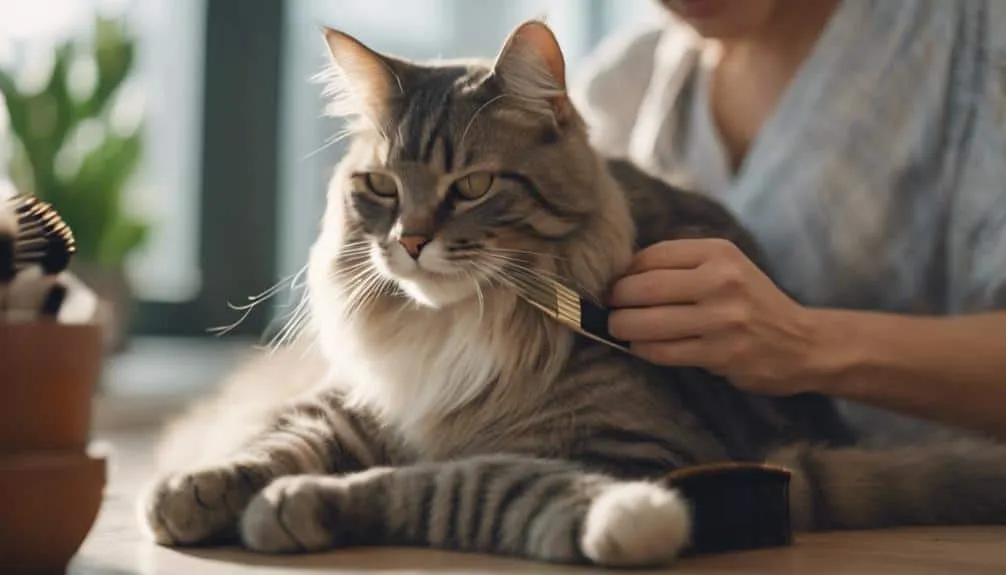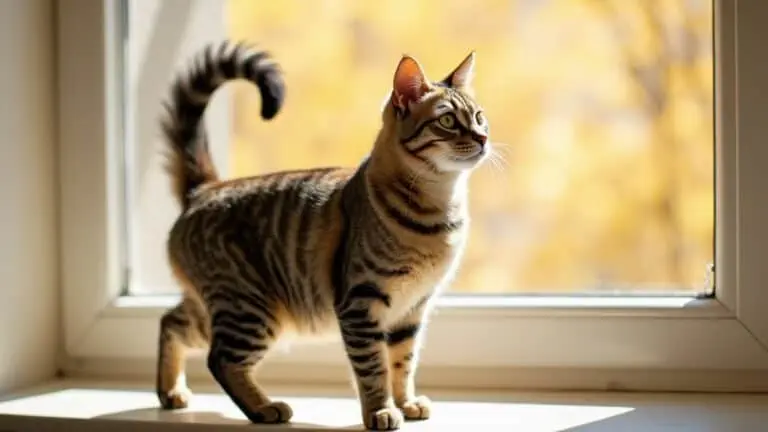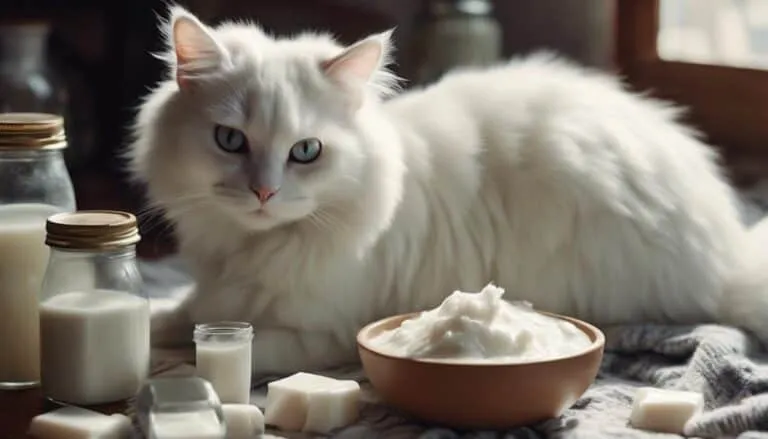The Best Fluffy Pancakes recipe you will fall in love with. Full of tips and tricks to help you make the best pancakes.

When it comes to grooming your feline friend, finding the right balance between safety and thoroughness is key. Imagine a stress-free grooming session where your cat feels comfortable and at ease throughout the process.
But how can you achieve this delicate balance? Stay tuned to discover practical tips and gentle techniques that will make shaving your cat a breeze while keeping their well-being a top priority.
Key Takeaways
- Prioritize your cat's well-being and safety during the shaving process.
- Use gentle grooming techniques, slow movements, and provide breaks as needed.
- Maintain a calm environment with soft tones, comfortable bedding, and calming aids.
- Shave in the direction of hair growth, avoid sensitive areas, and ensure tools are clean and well-maintained.
Understanding Your Cat's Needs
Do you understand your cat's specific coat type and grooming requirements before considering shaving to ensure their well-being and comfort?
Cats vary in coat types, from short-haired to long-haired, each requiring different grooming schedules. It's essential to identify sensitive areas on your cat's body that may need extra care during grooming, such as the belly or armpits. Before opting for shaving, assess if professional groomers recommend it based on your cat's individual needs, skin conditions, or matting issues.
Consulting with a veterinarian or professional groomer is crucial to determine the necessity of shaving for your cat. Factors like age, health status, and temperament play a significant role in deciding if shaving is the best grooming approach. Ensure your cat's comfort and safety throughout the process by using gentle techniques and appropriate tools. Prioritize your cat's well-being above all else, seeking assistance if needed to make the grooming experience as stress-free as possible.
Gentle Approach to Grooming
When grooming or shaving your cat, remember to use gentle, slow movements to ensure their comfort and well-being. A gentle approach is crucial to avoid causing any discomfort or stress to your furry friend. Throughout the grooming process, be patient and provide breaks to allow your cat to relax. This will help create a positive association with grooming sessions. Speak softly and offer treats to make the experience more pleasant for your cat.
Maintaining a calm demeanor is essential during grooming. Avoid sudden movements that could startle your cat. By staying relaxed, you can help your cat feel at ease. Regularly check your cat's body language for signs of distress or discomfort. Adjust your approach accordingly to ensure a gentle grooming experience. This attentive care is especially important for cats with allergies, as they may be more sensitive during grooming sessions. By following these gentle techniques, you can make grooming a positive and stress-free experience for your beloved pet.
Proper Tools and Equipment
To ensure safe and effective grooming when shaving your cat, it's important to use pet-specific clippers with a #10 blade. Professional groomers typically utilize electric clippers designed for pet grooming to maintain a proper hair length. Avoid using razor blades or scissors for shaving, as they can increase the risk of cuts and skin irritation. Keeping clipper blades clean and well-oiled is essential for smooth and efficient shaving sessions.
Emotion-evoking Bullet List:
- Using the right tools can make grooming a comforting experience for your feline friend.
- Electric clippers designed for pet grooming ensure precise and safe trimming of cat hair.
- A #10 clipper blade is recommended for achieving a professional finish and maintaining the ideal hair length.
- Opting for safe grooming practices with the correct equipment shows your dedication to your cat's well-being.
Creating a Calm Environment
Creating a calm environment for your cat during the shaving process is crucial for ensuring a stress-free grooming experience. Start by preparing a grooming area that's quiet and free from distractions. This will help keep your cat relaxed while you attend to their fur.
Using soft, soothing tones and gentle strokes as you brush your cat can help reassure them and maintain a calm atmosphere. Providing comfortable bedding or their favorite blanket can make them feel secure and at ease during the grooming session. Consider using calming pheromone sprays or diffusers to reduce your cat's stress and anxiety before you shave them.
Additionally, playing calming music or white noise in the background can create a peaceful environment that promotes relaxation for your cat. Remember to take frequent breaks during the grooming process to ensure your cat remains comfortable and calm throughout.
Shaving Techniques for Safety
To ensure a safe and comfortable shaving experience for your cat, it's essential to start by understanding proper shaving techniques. When grooming your feline friend, remember to follow these tips:
- Shave in the direction of hair growth: This minimizes skin irritation and discomfort for your cat.
- Use caution around sensitive areas: Areas like the belly, armpits, and genitals require extra care to prevent accidental nicks or cuts.
- Maintain your grooming tools: Regularly clean and oil your clippers to ensure a smooth and efficient shave without pulling on the hair.
- Consider partial-body shaving: This technique allows you to manage specific problem areas while reducing stress on your cat during grooming sessions.
If you're unsure about shaving your cat safely, consider consulting a professional Pet Groomer. They've the expertise to perform a belly shave or give your cat a stylish lion cut while ensuring the process is gentle and stress-free.
Dealing With Matting and Knots
To ensure your cat's comfort and health, it's crucial to address mats and knots in their fur promptly. Mats can lead to skin issues and discomfort, especially in hard-to-reach areas.
Matting Prevention Tips
Regularly brushing or combing your cat's fur can effectively prevent matting and knots, ensuring their skin stays healthy and comfortable. To help you in this grooming task, consider the following tips:
- Use the Right Tools: Choose a comb or brush suitable for your cat's fur type to prevent mats from forming.
- Establish a Routine: Regular grooming sessions can help you catch and address matting early on.
- Be Gentle: Approach grooming with patience and care to avoid causing discomfort or skin irritation.
- Seek Professional Help: If mats are persistent or difficult to manage, professional groomers can safely remove them without harming your cat's skin.
Knot Removal Techniques
For effective removal of mats and knots in your cat's fur, utilize a metal comb or slicker brush with gentle techniques. Apply a detangling spray or conditioner to help loosen the knots, making them easier to comb out.
Work on small sections at a time, starting from the outer edges of the mat and slowly working towards the skin. Remember to be patient and gentle to avoid causing discomfort or pain to your cat during the process.
If the mats are severe or extensive, consider seeking professional help to ensure safe removal. By taking care of your cat's fur and addressing knots promptly, you can prevent discomfort and maintain healthy hair growth.
Post-Shave Care Tips
After shaving your cat, ensure proper post-shave care by bathing them with lukewarm water and cat-specific shampoo to maintain their skin and fur's cleanliness. Once your cat is clean, follow these post-shave care tips to ensure their well-being:
- Use a large towel: Gently dry your cat after their bath to prevent them from catching a chill.
- Opt for a cool setting: If you use a blow dryer, choose a cool setting to avoid overheating your feline friend.
- Seek professional assistance: For extensive matting or grooming issues post-shave, consult a professional to guarantee your cat's health.
- Break down grooming sessions: To make the process less stressful, divide full-body cuts into smaller parts, preventing agitation in your cat.
Frequently Asked Questions
Is It OK to Shave an Indoor Cat?
Yes, it's okay to shave an indoor cat, especially during shedding season or in hot weather. Consider consulting professional groomers for cat grooming advice. Shaving can help with temperature regulation and prevent matting in your cat's coat.
How Do You Give a Cat a Sanitary Shave?
To give your cat a sanitary shave, follow these cat grooming tips: Use safe techniques for DIY cat grooming. Maintain cat fur by trimming around the genital area and hindquarters to promote cleanliness and prevent infections.
What Do Groomers Use to Shave Cats?
To shave cats safely, groomers use professional tools such as electric clippers with various blade lengths. They consider cat behavior, skin sensitivity, and coat maintenance. Groomers handle clippers carefully to ensure a smooth and comfortable shaving experience.
What Is the Safest Blade to Use on a Cat for Any Kind of Shave Down?
When shaving your cat, opt for a #10 blade for safety. This blade offers a close shave without risking cuts. It's ideal for sensitive areas. Professional groomers often recommend it for efficient, precise grooming with minimal skin irritation.
Conclusion
In conclusion, caring for your cat's grooming needs with gentle shaving techniques is essential for their well-being. By understanding your cat's needs, using proper tools, and creating a calm environment, you can safely shave your cat without causing stress or harm.
Remember to always prioritize your cat's comfort and safety, seek professional help for extensive matting, and provide post-shave care to keep your feline friend healthy and happy.








